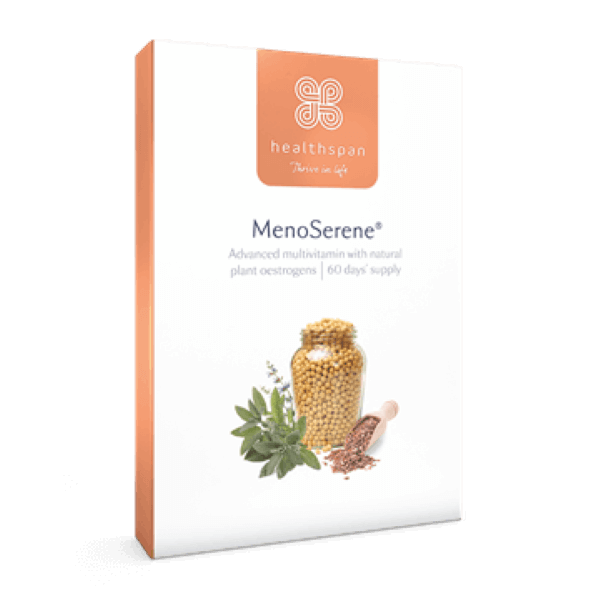Hormone replacement therapy (HRT) is a common treatment method for relieving symptoms of menopause. But how does it work, what options are available, and what are the possible side effects of treatment?
Menopause is a period in a woman's life when the ovaries stop producing eggs and menstruation ceases. It usually occurs when a woman reaches her late 40s or early 50s, but some women can experience menopause in their 30s or early 40s.
It is caused by falling levels of oestrogen and progesterone: two key hormones involved in controlling the menstrual cycle. Falling levels of these hormones can cause a range of unpleasant symptoms, such as hot flushes or night sweats, which can last for just a few weeks or continue for a number of years.
What is hormone replacement therapy?
Hormone replacement therapy (HRT) is used to help restore a woman's levels of oestrogen and progesterone to normal, and therefore relieve some of the symptoms of menopause.
Oestrogen
Oestrogen is involved in controlling when the ovaries release an egg. The drop in oestrogen during menopause can result in a number of physical and emotional symptoms including:
- Hot flushes
- Night sweats
- Depression
- Vaginal dryness
- Loss of libido
All types of HRT contain oestrogen and aim to return levels of this hormone to normal.
Progesterone
Progesterone is involved in regulating the thickening of the uterine wall. Falling levels of progesterone do not affect the body in the same way as oestrogen. However, if you take HRT that just contains oestrogen, the lining of the uterus can build up and increase a woman's risk of developing cancer of the uterus. Progesterone is therefore often used in combination with oestrogen, to reduce this risk. Women who have had a hysterectomy do not need to take progesterone as they no longer have a womb and so aren't at risk of developing uterine cancer.

MenoSerene
Vitamins, minerals and plant oestrogens to support women through the menopause
- Vitamin B6 to regulate hormonal activity, high dose of vitamin E
- Calcium, magnesium and vitamin D for healthy bones
- Phytoestrogens from soy and omega 3 from flax
Types of HRT
There are different types of HRT and finding the right one can often prove difficult. A low dose is usually recommended to start with to minimise the side effects. This can be increased at a later date if necessary.
Cyclical HRT
Cyclical HRT is usually recommended to women who are experiencing menopause symptoms but are still menstruating. There are two types:
- Monthly HRT - oestrogen is taken every day and progesterone is taken at the end of the menstrual cycle for 12-14 days. This results in a regular bleed every 28 days and is usually recommended to women who are having regular periods.
- Three-monthly HRT - oestrogen is taken every day and progesterone is taken for 12-14 days every 13 weeks. This results in a bleed every 3 months and is usually recommended to women who are experiencing irregular periods.
Continuous combined HRT
Continuous combined HRT is usually recommended to post-menopausal women. Both oestrogen and progesterone are taken every day without a break.
Oestrogen-only HRT
Oestrogen-only HRT is usually recommended to women who have had a hysterectomy. This is because they have had their womb removed and so there is no risk of developing cancer of the uterus and therefore no need to take progesterone.
How is HRT taken?
HRT can be taken in a number of forms and some women prefer one method more than others. It can be taken as a tablet, skin patch, gel, implant or vaginal cream or ring. Some methods work better for certain symptoms so it is worth talking to a doctor to see which is likely to suit you.
What are the side effects of HRT?
Side effects with HRT are uncommon and usually improve over time. They include:
- Breast tenderness or swelling
- Headaches/migraines
- Fluid retention
- Nausea
- Bloating
- Depression
Is HRT suitable for everyone?
In short, the answer is no. HRT may not be suitable for women who:
- Are pregnant
- Have a history of breast, ovarian or womb cancer
- Have a history of heart disease or stroke
- Have a history of blood clots
- Have liver disease
- Have untreated high blood pressure
Are there risks of HRT?
HRT has recently received a lot of media attention after the publication of several studies that raised concerns over its safety. However, these findings should be looked at carefully as they don't apply to most cases and may be misleading.
The main risks associated with HRT are:
- Breast cancer
- Ovarian cancer
- Womb cancer
- Venous thromboembolism (a blood clot that can cause deep vein thrombosis)
- Stroke
- Coronary heart disease
If you are unsure of which HRT is right for you or are worried about the risks of HRT you should seek advice from your GP.
Find more products to support you through the menopause in our menopause section.







